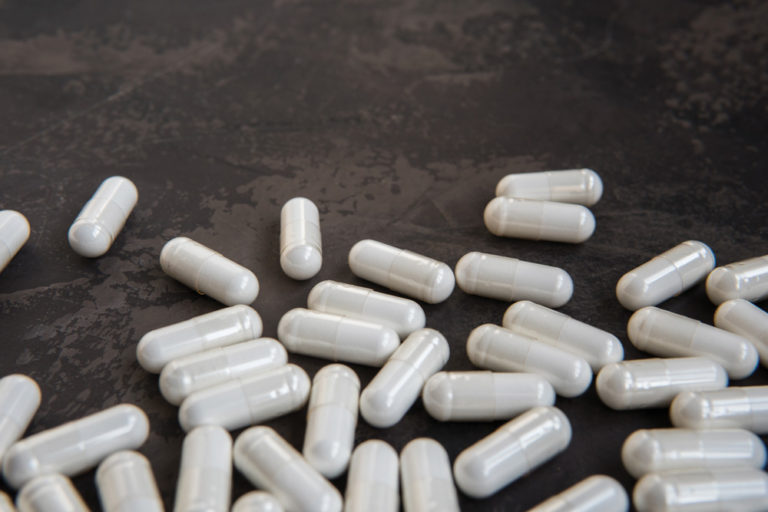Of all dietary supplement categories, probiotics has accelerated its growth, primarily based on research revelations and an excited mass and social media. Here’s how to keep up.
Probiotics of yore were once only found in the refrigerators of health food stores. And consumers who took them were in an elite class of super natural health store devotees. In other words, you had to know that probiotics even existed and that you had to rush the bottles of cold capsules home to your own refrigerator.
“My first exposure to probiotics came more than 30 years ago when as a marketing brand manager, it was my assignment to launch an acidophilus product,” related Brian Craig, CEO of Texas-based Essential Formulas/Dr. Ohhira’s Probiotics. “Even among the thoroughly committed health food supplement users, there was very little understanding of the value of ‘friendly bacteria.’ When Essential Formulas launched Dr. Ohhira’s Probiotics over 18 years ago, the general public still had little to no understanding of probiotics except perhaps beyond having heard that yogurt with a live bacterial culture was good for you.”
Recently, though, the media seems eager to report on positive findings of probiotics—especially after the revelation that the human genome is so relatively limited and that we, as humans, are so dependent on the genes of the microbes inside and on us. Phrases, such as “we are more bacterial than human,” has caused many people to re-think the old germ concept (all bacteria are bad—we must obliterate all of them!).
But during very recent years, this has changed—and mass consumers of all ages have heard the good news that probiotics are good and natural to take. The mass media has hooked up with researchers to spread the good word about the beneficial bacteria.
The growth of probiotics is projected to increase steadily; according to Nutrition Business Journal, gastrointestinal (GI) health makes up 6.8 percent of the U.S. supplement market, about $1.9 billion, and the growth of gut health supplements are expected to rise through 2021.
Indeed, there is a lot more awareness about the multiple benefits of probiotics than there was five years ago, compared Sheryl Eaglewoman, wellness manager of Mountain Valley Foods (Kalispell, MT). This comes from the continuing media exposure, plus more practitioners are recommending their patients take probiotics. “One of the points consumers seem to know now is the relationship between the gut and other organs such as the brain and heart; this is a big plus as I’ve been telling customers this for years,” she commented. “They are also more knowledgeable about the critical role of prebiotics.”
She continued, “the fact that people can connect mood disorders with gut health and diet is terrific. When customers understand this, they want to further explore the category.”
Eaglewoman said she is impressed by Natural Factors’ 3 Brains Total, which is formulated to support the relationship between the brain, heart and gut, and features 10 billion CFUs.
She said she also is “a big fan” of Dr. Ohhira, because of its long fermentation process and what it produces. Plus, “they play Mozart for the strains during this process.” She will also recommend Bio-K Plus liquid cups with 50 billion CFUs per serving, and HCP Formulas’ Abzorb Vitamin & Nutrient Optimizer in both 60 and 150 counts. “When customers try the 60 count, most come back and buy the 150 count, because they feel so much better,” she states.
Most people will immediately link better digestion and fewer GI issues with feeling better overall. “Poor digestive health places a burden not only on an individual but also on the health care system,” stated Jennifer Weinhardt, BS, MS, research and development specialist, Bluebonnet Nutrition, Texas. In 2009, she cited, the National Commission on Digestive Disorders in the U.S. reported in 2009 that 60 to 70 million Americans are affected each year by digestive diseases at a cost that exceeds $100 billion in direct medical expenses. Each year, an additional 105 million visits are made to physicians related to digestive diseases.
Tina Anderson, CEO Just Thrive Probiotic, Park Ridge, IL added that more than 60 million people are currently dealing with some kind of gut issue. She pointed to media outlets (national, regional and local), as having impact in educating typical consumers about the link between probiotics and gut health. But also, she mentioned, “is the interesting work from bloggers and even micro-influencers in sharing their own personal stories, removing any stigma around gut challenges and making it a normal point of conversation within their communities. Gut health is now being treated by and valued by medical doctors, and patients are savvier than ever before thanks to diligent media reporting,” she commented.
More recently said Weinhardt, a burgeoning number of studies are revealing how probiotics affect health, not just digestive benefits, but in almost every other area. “With the science behind the function of and the connection between pre- and probiotics still requires more stringent deciphering both scientifically and mechanistically. The explosion of publications and interest in probiotics has resulted in a body of collective research that point toward great promise,” she illuminated.
In agreement is Steven Williams, science liaison, LifeSeasons of Texas, who observed that during the past few years researchers have published a large number of studies showing distinct differences between the microbiomes of people with health conditions and those that are healthy. “These studies show strong correlations between perturbation of the gut microbiome and conditions like diabetes, allergies, IBD (inflammatory bowel disease), depression and autoimmune diseases,” he elaborated. Further, the media attention discussing the results have changed perceptions about the importance of the gut and its microbial inhabitants.
Chiropractic physician Tom Bayne, consultant and scientific advisor, Arizona-based Probiogen, observed that currently, scientists are starting to show links between certain strains of probiotics and disparate actions, such as promoting weight loss, reducing cholesterol and triglycerides, and even improving mood. “We’re seeing more consumers look for more than just an improvement in digestion from their probiotics,” he emphasized.
There are challenges of such category success, warned Craig. Any time there is a product category with huge growth, there will be marketers—both legitimate and some unscrupulous, who will try to “cash in” on the category. The number of probiotic products seems to grow exponentially. And unfortunately, despite the great increase in positive and valuable information available to consumers, there is also a lot of misinformation, pseudoscience and even deception. As this grows, consumers will become skeptical of the value of probiotics and the whole channel will suffer.
Recent Milestones
In any rapidly developing category, there are multiple milestones, or significant developments, especially those deemed so important by manufacturers that they serve as to inspire R&D to launch new products or reformulate existing ones.
And in the world of probiotics (microbiome), there’s been quite a few developments industry experts find compelling and appealing.
To begin with, pointed out Williams, for a probiotic to be effective, it must be alive at the time of delivery. And although freeze/spray drying has helped prolong the life of many probiotics in supplements, much of the dried bacteria still remain highly susceptible to oxygen, heat and moisture, and in general, the dried probiotics are still insufficient to guarantee acceptable room-temperature stability of the microorganisms. “Over the past five years, suppliers and manufacturers have focused significant effort on improving the resilience and stability of their probiotics. Major progress has been made in the development of enteric coatings and microencapsulations, the discovery of inherently stable spore-forming probiotics, the optimization of stabilizers, and the creation of novel protective delivery methods,” he reported.
The premier development Anderson has seen has been the advancement of probiotic strains in the spore-forming bacillus species of probiotics, which, she said, naturally survive digestion. “This approach has replaced the outdated approach of reseeding the gut to now reconditioning the gut. Certain bacillus strains, such as HU36, Bacillus indicus, also produces RDA levels of carotenoids in the intestines where they are immediately absorbed,” she explained.
Bayne also stated he believed that the introduction of spore-based probiotics is a milestone in this market. Normally, he explained, these species are finicky and difficult to stabilize in a dietary supplement, but recent technology has allowed for this new class of probiotics to enter the retail market. “A key reason that spore-based probiotics are so revolutionary is that they can create their own protective shells to shield them from harsh environments, allowing them to survive digestion without encapsulation. Further, we’ve also seen that bacillus spores can significantly reduce biomarkers of inflammation, like IL-1beta, TNF-alpha, and lipopolysaccharide (LPS). This is the first indication that probiotic spores may help resolve leaky gut and play a protective role in chronic inflammatory conditions.”
Jason Mitchell, ND, CEO Probulin, Kansas, emphasized, “We are not just talking about acidophilus anymore.” The much keener and wider scientific understanding of the roles played by a diverse number of probiotic strains have shed more importance on creating and sustaining a healthy gut microbiome. The industry, he pointed out, can now create scientifically validated formulations of probiotic strains for specific use beyond gut and immune health, such as weight management. Target-specific action, as shown by science, is significant.
Similarly, Mitchell said, dramatic improvements in delivery system technology has had tremendous impact on probiotics in recent years. “We have evolved from yogurt and kefir-type products to coatings on capsules and now to even more advanced scientifically researched systems like MAKTrek 3-D Probiotic Delivery System used by Probulin,” he said.
One of the newest and most exciting developments in microbiome science, according to Ross Pelton, RPh, PhD, CCN, director of science at Texas-based Essential Formulas, is the understanding of the importance of post-biotic metabolites, which are compounds that bacteria produce when they digest and ferment the foods they consume. Scientists are demonstrating wide-ranging health-regulatory effects in the intestinal tract. “We now know that it is not the bacteria themselves, but rather their metabolites that control and regulate our health,” he said. “Probiotic bacteria are imperative, but it is the multitude of postbiotic metabolites that control and regulate many aspects of human health. Postbiotic metabolites are the mission control center of human health, and are the exciting new frontier of the microbiome and probiotic science.”
Improvements in quality and understanding what constitutes quality is always an important stride, and in the rapidly burgeoning field of probiotics research and development, quality markers includes bile resistance, proper pH and DNA verification, Weinhardt pointed out. It’s no longer about higher CFUs denoting quality of the probiotic.
“It’s important to choose a product that contains complementary strains that work well together and are tested to survive together in a capsule,” she explained. “Tests on some probiotics have shown that various strains can compete against each other, forcing less resilient strains to die off in a capsule before consumption. Strains need to be selected and DNA verified to ensure they don’t compete with one another for survivability and will work together to promote a variety of structure/function applications.”
Weinhardt elaborated that the benefit of probiotics comes from survival in the gastrointestinal tract and the resulting health effects they tend to generate. Studies evaluating how well probiotics fare through the GI tract show that about 10 to 30 percent of probiotics survive. To colonize in the intestine, probiotics, she asserted, need to be resistant to acid pH and biliary acids. Advanced technology, such as freeze-drying each strain under low temperature and pressure, which protects them from the normal acidic conditions of the GI tract (pH 3 or 4) until they reach their target site of action—the lower small intestine, protects the integrity of probiotics.
Heightened interest in probiotics with novel efficacy will also likely have a huge effect of the market, Williams noted, adding that further research into more specified health effects will be crucial for the continued growth of the segment. Positive outcomes of that research will support consumer and regulatory confidence. “Indeed, if evidence continues to accumulate at its current pace, it may be only a matter of time until the FDA (U.S. Food and Drug Administration) or EFSA (European Food and Safety Authority) begins approving novel probiotic health claims,” he predicted.
Probiotic Products to Consider
LifeSeasons, Williams said, is actively working on bringing a new and unique probiotic product to market. Currently, the company offers Digestivi-T, an enzyme and probiotics support supplement. It helps break down food and contains more than 10 billion beneficial organisms per serving. “Digestivi-T also enhances intestinal integrity by promoting nutrient and water absorption and decreasing allergic antigens (i.e. gluten and dairy),” he noted.
According to Bayne, Probiogen probiotics are made with Smart Spore technology to combine the probiotic spores with a blend of supporting herbs for a variety of health outcomes—Allergy Defense, Weight Management, Stress and Mood Balance, Daily Digestive Balance, Women’s Vitality, Men’s Vitality, and Adults 55+ Probiotic Multi.
Probulin digestive probiotics, according to Mitchell, use the exclusive MAKTrek 3-D Probiotic Delivery System whose efficacy, he asserted is supported by three scientific studies and a patent showing the ability to deliver more surviving beneficial probiotic bacteria than other popular delivery systems.
And as more research shows how probiotics are useful in topical applications, Probulin’s Probiotic Skin Therapy line uses technology called ProbuSkin that has been shown to help improve skin moisture and texture, according to Mitchell. The line also includes ingredients such as organic aloe vera, organic shea butter, jojoba oil, marula oil, among others.
Bluebonnet’s Advanced Choice SingleDaily Probiotics is offered in 10, 30 and 50 billion CFU strengths, and also contain 20 DNA-verified probiotic strains and formulated to: promote digestive and immune health, support regularity, promote nutrient absorption, and relieve occasional GI distress. Bluebonnet’s Advanced Choice Ladies’ SingleDaily Probiotics also is offered in 10, 30 and 50 billion CFU strengths, and feature seven DNA-verified probiotic strains and formulated to: promote digestive and immune health, support vaginal and urinary tract health, enhance mood/emotional well-being, and assist in nutrient absorption.
Weinhardt noted, “All of the strains and starter cultures found in Bluebonnet’s Advanced Choice SingleDaily Probiotics have been genetically identified and characterized through a highly sensitive tool used in molecular biology to detect DNA polymorphisms called amplified fragment length polymorphism (AFLP) by the Belgian Coordinated Collections of Microorganisms (BCCM). This is important because characterization of the strain diversity of lactic acid bacteria (LAB) species has only really begun in the last decade or so.”
Dr. Ohhira’s Probiotics are not cultured in a laboratory, according to Pelton. “Natural crops and water are fermented for three years with 12 distinct probiotic strains that encourage the body’s innate ability to grow its friendly bacteria. This rich culture medium (prebiotics) is then encapsulated along with the beneficial lactic acid probiotics that have developed together over the three-year period, and the resulting nutrients from this fermentation process is post-biotics, a term that refers to the vast array of compounds that are produced by the metabolic activity of probiotic bacteria. These postbiotic compounds play vital roles in the regulation of health and the maintenance of a healthy microbiome.”
Just Thrive Probiotic and Antioxidant, said Anderson, has produced an OTC (over-the-counter), spore-based and proprietary strain of probiotic. These strains were the subject of a double-blind placebo-controlled, human clinical trial on leaky gut (metabolic endotoxemia) at the University of North Texas. She reported that after 30 days, the results have showed the placebo group had a 36 percent increase in the endoxins leaking into their bloodstreams, while the supplement group saw a 42 percent reduction in the endotoxic response. “These are groundbreaking results that not only has no other probiotic ever shown, but no other product, OTC or prescription ever shown,” she stated.
Just Thrive contains the strain, Bacillus indicus (HU36), which also produces RDA levels of antioxidants such as alpha and beta carotene, lycopene, lutein, astaxanthin and zeaxanthin right in the intestines where they are immediately absorbed. VR
For More Information:
Bluebonnet Nutrition Corp., www.bluebonnetnutrition.com
Essential Formulas, www.essentialformulas.com
Just Thrive, www.thriveprobiotic.com
LifeSeasons, www.lifeseasons.com
Probiogen, www.probiogen.com
Probulin, www.probulin.com








